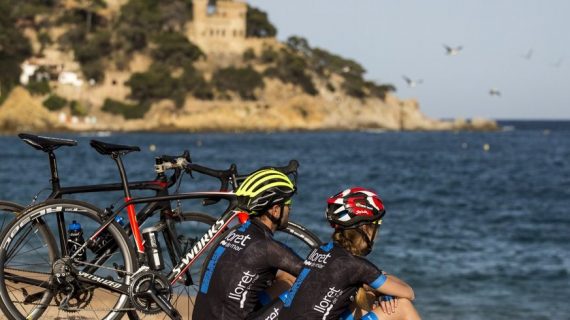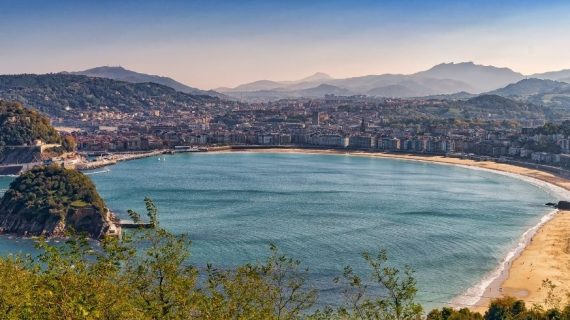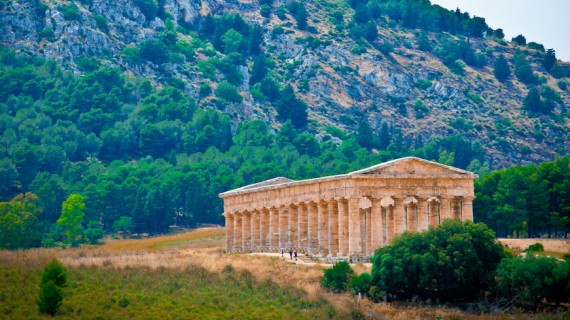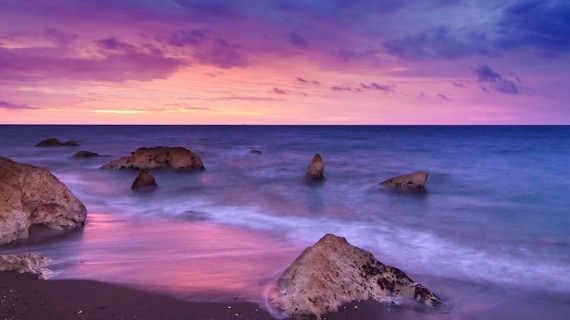Girona (Catalonia) is one of the most beautiful and best preserved medieval cities. The city has a wide cultural offer: monuments, museums, architectural buildings, festivals and restaurants, among others. If you are planning to spend your holidays in the city of Girona, Ecobnb offers you a travel guide for responsible tourists.
WHAT TO VISIT IN GIRONA
The city of Girona is one of the most relevant in Catalonia, it allows us to know the history of two thousand years from two areas mainly: the Força Vella and the medieval extension. Likewise, the expansion of the expansion is located in the medieval area (Areny area) and the modern part.
Força Vella
La Força Vella was the origin of the city, it is a fortress of Roman origin built in the 1st century BC. C. Within this area of the city you can visit:
- The Cathedral (11th-18th century): It is the most characteristic place in the area, since almost all styles can be seen in this infrastructure: Romanesque, Baroque and Gothic.
- The Roman walls served to delimit the population of Girona. Later, they were expanded with the Carolingian Wall, one of the longest walls in Europe. This new extension allows us to walk along the old road to Ronda and enjoy the towers as viewpoints to contemplate the city.
- La Pia Almoina, located next to the steps of the Cathedral, is one of the most representative buildings of the Gothic style.
- El Call, the Jewish quarter of Girona.
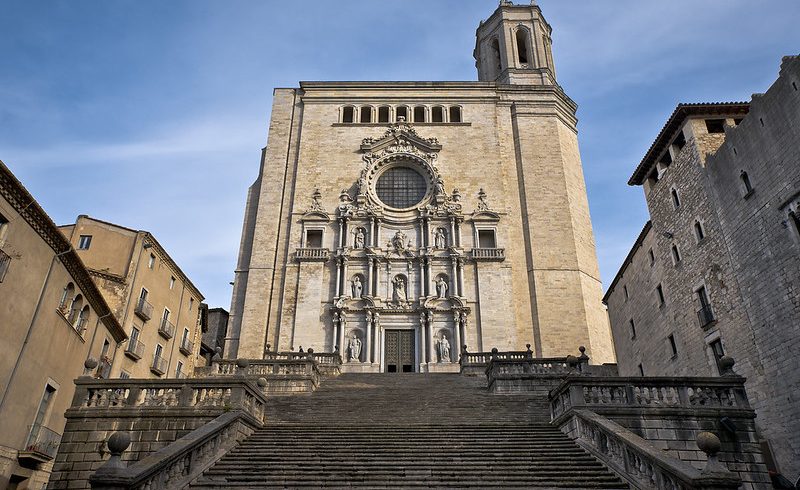
Medieval expansion
The medieval expansion was established with new neighborhoods (Sant Feliu, Sant Pere, Areny, Vilanova and Mercadel) around the Força Vella between the 11th and 15th centuries. Within this area you can visit:
- Continuation of the walls. Carrying out the circuit of the Camino de Ronda, crossing the wall is one of the best things Girona offers.
- The Basilica of Sant Feliu: It was the first cathedral in Girona and is one of the most important Gothic buildings in the city.
- San Pere de Galligants and Sant Nicolau: One of the most important Romanesque complexes in Barcelona; they are currently used as a museum and exhibition hall.
- Arab Baths: Romanesque style construction, inspired by the Roman baths. Its most appreciable elements are the room at the entrance and the dome.
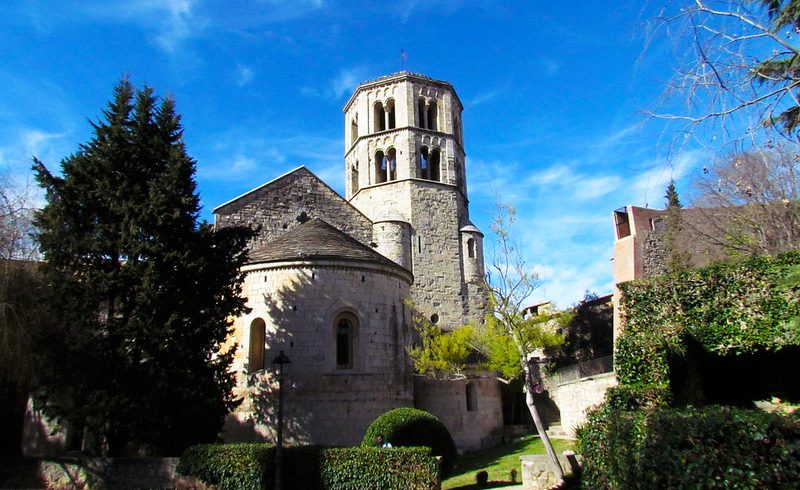
Areny area
The medieval expansion was carried out in the Areny area, it extended through the area of the Onyar river connecting both areas with the Sant Prancesc bridge. Within this sector you can know:
- The houses of the Onyar: The city offers spectacular images of squares and steep alleys, highlighting the houses of the Onyar painted with colors, this image reminds us of Florence (Italy).
- La Rambla de la Llibertat: Commercial and leisure area of the town, where relevant buildings such as Casa Norat are located.
- Plaza de VI: Here you can visit the Town Hall, the General Palace and the Municipal Theater.
- The university and Sant Doménec: The Sant Doménec convent (Gothic construction) and the Les Aligues building (Renaissance) are the headquarters of the literature campus and the rectory.
- Home of Onyar, photo by Xavier Tugas from Flickr
- Rambla de la Libertat, photo by Félix González from Flickr
- Sant Doménec, photo by Rossed Grida from Flickr
Finally, we must not forget the modern part of the city that has developed over time where you can visit the Plaza de la Independència and the different buildings of Modernism and Noucentisme architecture; highlighting Rafael Masó and his different constructions such as the Masó house.
Our green tip: Respect the cultures and customs of the local community and take the opportunity to learn from them. On the other hand, keep in mind that they are places that are close to each other and very accessible, so you will have no problem making your visit on foot or by bicycle.
NATURE AND PARKS
Girona is one of the most privileged cities with regard to natural heritage. However, we are going to know the main natural parks of the city located next to the Ter river: La Devesa park and Les Ribes del Ter park.
- La Devesa Park is the largest urban park in Catalonia located in Girona. It is also known for the height of its banana trees and for the “Jardines de la Dehesa” where you can enjoy a wide variety of vegetation, and also practice sports and walk.
- Les Ribes del Ter park follows the river’s path from Fontajau to the pastures of Puente Mayor and is ideal for walking or practicing sports.
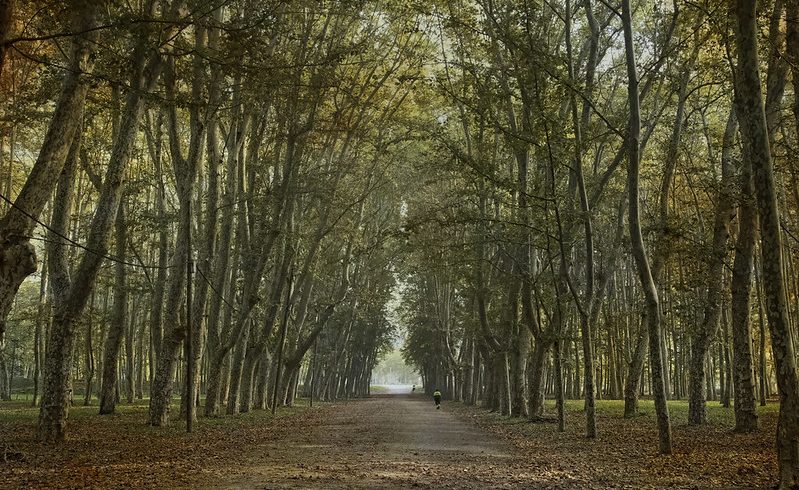
The Sant Daniel Valley also stands out as one of the best-preserved natural spaces in the city, which is accessed through the Sant Pere de Galligants monastery.
Our green advice: Avoid walking through the most crowded areas to enjoy your visit to the park.
GREEN ITINERARIES
Walking
- Anella Verde: Route to enjoy the natural spaces of the eastern sector of the city of Girona. It begins near the Onyar River and ends in Campdorá. It is not a circular route, so it must be taken into account that public transport can be used to get to and from the starting site.
- Sant Daniel: This circular route will allow you to get to know one of the best natural spaces in the city, such as the Sant Daniel valley. Consecutively, the route towards the massif of Les Gavarres begins.
- Galligants and the O mountain: By completing this itinerary, you will be able to get to know three natural areas of the city (Sant Pere de Galligants, the San Daniel valley and the O mountain).
- The stone route: You will visit the old town area, through the Pedreres area where you can enjoy the architecture of Girona and learn more about the so-called “stone route”.
- Monte de Sant Miquel: Itinerary through the old town of Girona. The tour begins in Sant Daniel, following the Galligants river, les Gavarres until ascending to Sant Miquel where you can enjoy wonderful views and choose between two paths: Cal Micaló or Collet d’en.
- Parque de les Ribes del Ter and Devesa: Route of the parks.
- Huertas de Santa Eugènia and dehesas de Salt: Route that shows us the importance of the town and the orchard of Santa Eugènia. In addition, you will enjoy the natural area of the salt meadows.
All these itineraries are easy to access, so it is advisable to do them on foot. In addition, to contemplate the wonderful natural landscapes you can go hiking.
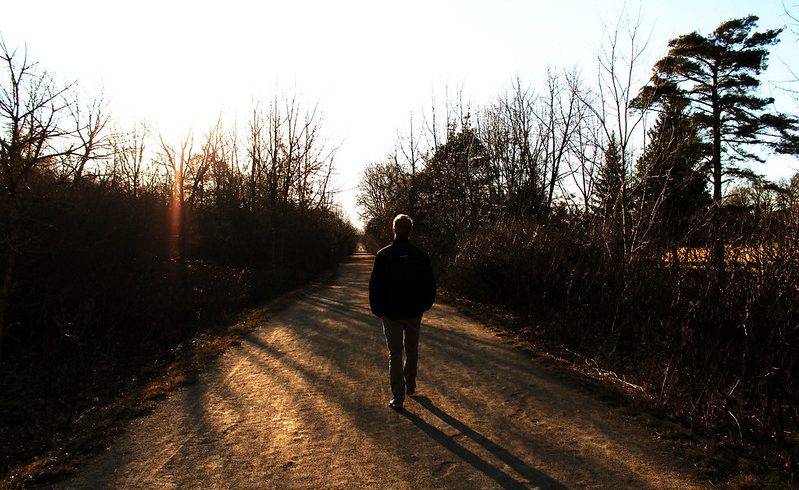
By bike
Girona, on the other hand, is an accessible city with short distances. For this reason it has a cycle path within the city. In addition, Girona is surrounded by Greenways, which is why the city offers a wide variety of routes along the Greenways that allow you to discover fantastic landscapes. Finally, if you love this means of transport and want to take short tours, here you will find 4 cycling routes through the city of Girona and the Costa Brava.
Our green tip: Make your routes by bike (when possible), on foot or by public transport. This way you will help take care of the environment.
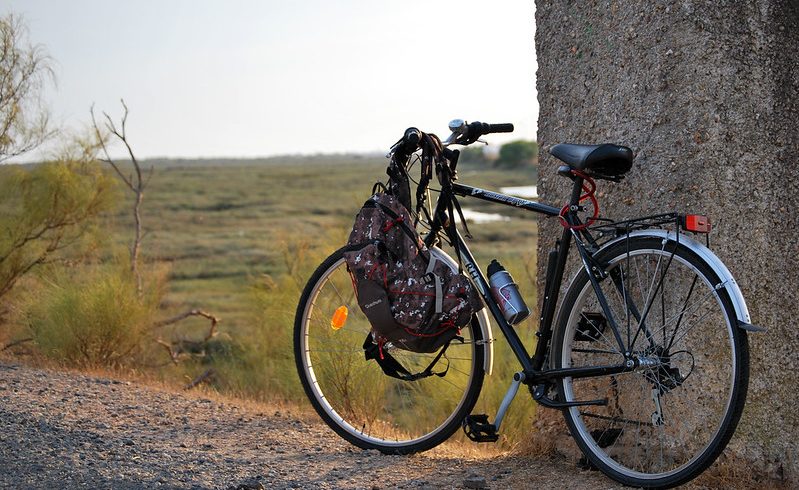
SLEEPING IN ECOLOGICAL ACCOMMODATIONS
To sleep you have to stay in an ecological accommodation; where they use ecological materials, renewable energy, food at kilometer 0 (local products or with ecological certificate) and finally, offer or carry out ecotourism activities. Girona offers several ecological or eco-sustainable accommodations that you can see at this link, such as the Hotel Mas Pelegri.
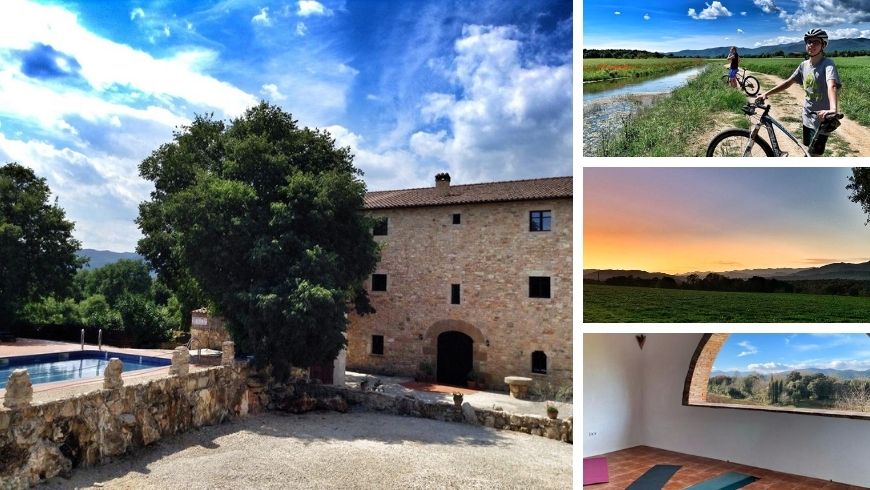
LOCAL GASTRONOMY
The gastronomy of Girona is based on the combination of traditional cuisine and avant-garde cuisine, using local products such as the meat of the cattle, the natural fish of its coast, and the vegetables of its gardens. For this, it can be said that its great gastronomic variety has led them to be able to enjoy restaurants awarded with Michelin stars. Likewise, the restaurant El Celler de Can Roca, which according to Restaurant Magazine is the best restaurant in the world. Here we will show you the typical dishes of Girona:
- Sea and mountain: a mix of products from the land and the sea;
- Suquet of monkfish and prawns;
- Anchovies from L’Escala: preparation of salted anchovies;
- Escudella de pagés: a soup with slices of sausage, chicken or meat, and also contains vegetables;
- Spanish omelet: potato omelet with some vegetables;
- Escudella: a typical dish of Christmas. Contains pasta and a variety of meat and vegetables.
- Sausage: in evidence the sausage, the salchichón and the fuet;
- Sweet Sausage: This sausage contains sugar, lemon, and cinnamon, so it’s sweet;
- Xuixo: typical gironese dessert filled with cream;
- Panellets: Typical dessert of the Feast of Saints;
- Apple from Girona;
- La ratafía: sweet liqueur based on local herbs;
- Escudella de pagés, photo by tush’s casas rurales
- Escudella, photo by tush’s casas rurales
- Xuixo, photo by tush’s casas rurales
Our green tip: enjoy the typical gastronomy of Girona and consume local products.
CURIOSITY
Several events of great importance are held in Girona, such as the “Gastronomic Forum” (February) where all professionals and food lovers meet. In addition, another event related to gastronomy is the “Gerudense Gastronomic Week” (March) where in some areas of Girona special menus are prepared for a week to enjoy the typical food of that place. Finally, the “Temps de flowers” event (May), an event that lasts a week and in which the city is decorated with flowers, is worth mentioning.
And now, are you ready to immerse yourself in adventure and get to know the medieval city of Girona?
Cover image: Photograph by Canva Pro
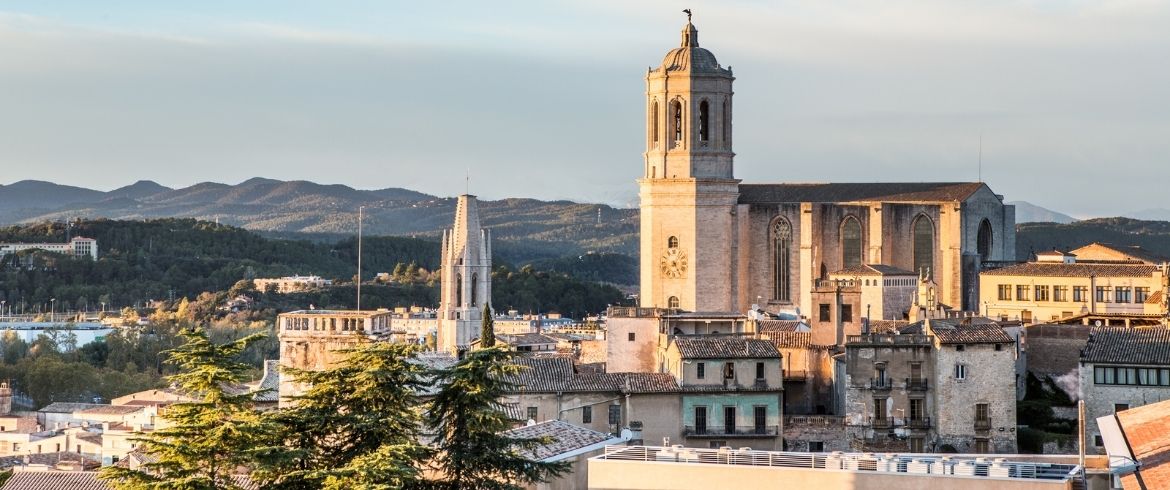
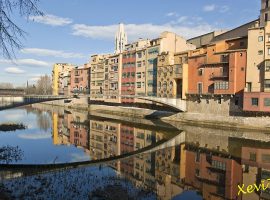
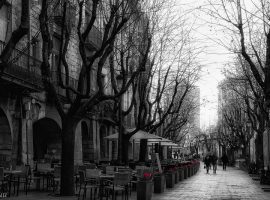
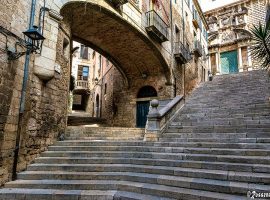



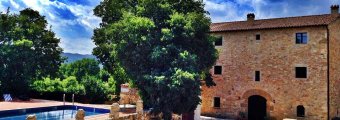 Hotel Mas Pelegri – Green Hotel in Serinyà, Girona, Catalunya, ES
Hotel Mas Pelegri – Green Hotel in Serinyà, Girona, Catalunya, ES  El Moli de Siurana – Green Farm house in Siurana, Girona, Catalunya, ES
El Moli de Siurana – Green Farm house in Siurana, Girona, Catalunya, ES 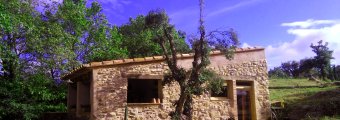 Casita entre viñas ecológicas – Green Farm house in Sant Climent Sescebes, Girona, Catalonia, ES
Casita entre viñas ecológicas – Green Farm house in Sant Climent Sescebes, Girona, Catalonia, ES 